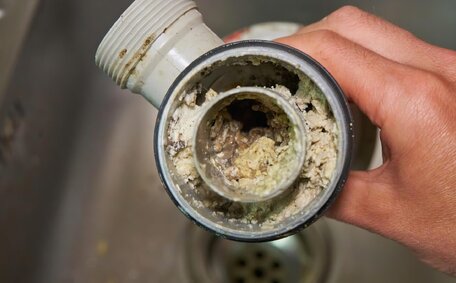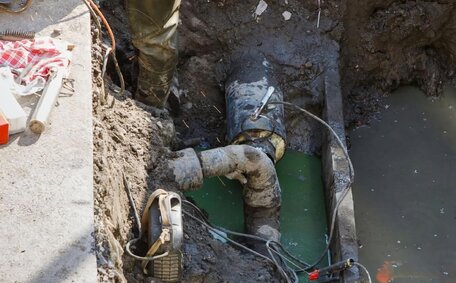Exploring the Latest Innovations in Gas Appliances
Recent advancements in gas appliance technology have significantly enhanced safety, performance, and convenience. Major brands such as Rinnai and Electrolux are at the forefront, creating appliances blending green hydrogen with traditional gases to achieve zero emissions, preparing for an environmentally-friendly future. These appliances also readily transition from traditional gas to 100% hydrogen without requiring modifications.
Remote operation through smart controls, which adjust settings like temperature and timers, is ideal for contemporary lifestyles. For example, Improved burner design enhances the cooking experience by optimising fuel consumption and effectively distributing heat.
Integrated diagnostic systems facilitate early fault detection and simplify maintenance, albeit installation may need planning. Beyond usability, clever designs target higher efficiency.
New home flame-failure protections are part of a broader move towards strategies like getting your home off gas, utilising multiple sensors to cut gas flow faster if the flame goes out. This prevents gas build up and enhances the safety of your home. Some high-end gas stoves even have child locks and auto shut-off timers for added peace of mind.
While prioritising safety, heating efficiency, and performance, companies also focus on improving indoor air quality and design aesthetics. Ultimately, modern advancements transform gas appliances into smart, convenient and safe options for sustainable heating cooking needs.
Achieving Greater Efficiency and Smart Controls
Modern electrical appliances and gas models incorporate intelligent technology and innovative designs that enable greater energy efficiency and cost savings.
Hot water and gas cooking appliances can be easily monitored and managed through smart controls accessible via mobile apps. Users can adjust settings, such as temperature for cooking hot water and heating, and operating times to reduce unnecessary energy consumption.
Diagnostic systems offer real-time performance insights similar to solar PV feedback, ensuring appliances operate at peak efficiency. This enables quick resolution of issues, maintaining optimal efficiency.
Enhanced components in electric ovens and other cooking appliances such as precise burners quickly heat up meals, reducing cooking time with improved ignition and heat exchangers that maximise heat transfer.
Ultimately, smart controls give users more convenience and control over their appliances for improved efficiency, while internal advancements target optimal fuel utilisation, especially in the realm of cooking hot foods. These developments not only reduce emissions but also represent a significant achievement in Australian energy conservation, aiding in lower energy bills for consumers.
Transitioning to Renewable Gases: Hydrogen and Biomethane
The gas industry is actively replacing gas with renewable alternatives like hydrogen and biomethane, which contribute significantly less carbon dioxide emissions. Biomethane, suitable for usage in your gas stove, is a carbon-neutral gas produced from organic waste that can be injected into existing infrastructure.
Key gas networks, under endorsement from the Victorian government, aim to provide more than 10% renewable gas by 2030 by mixing it with natural gas, aligning with Australian energy market directions. The Australian Gas Infrastructure Group acknowledges that all-electric homes often have lower annual energy bills than those using gas, and it aims for a 10% renewable gas blend by 2030, which includes biomethane.
Hydrogen natural gas, symbolising electric gas, stands as a clean, viable fuel for emission reduction, emitting solely water vapour upon combustion. By strategically mixing blends of hydrogen from renewables into the gas network, it ensures existing appliances remain unaffected and align with the guidelines provided by the energy market operator. Networks are preparing for a future 100% hydrogen supply, pertinent to the energy market, by designing hydrogen-ready infrastructure and appliances.
The transition towards these renewable gases provides the resources we need to align with net zero emissions goals while allowing consumers to enjoy using convenient gas for heating, hot water, and cooking with minimal disruption.
The Shift Towards Low-Emission and Sustainable Gas Use
There has been a growing focus within the gas industry on pivoting towards more sustainable and low-emission energy solutions. This harmonises with the aim to employ electric heat in refined heating cooling systems to address climate change and reduce carbon emissions.
Recent analysis from Energy Networks Australia found electric usage in Victoria produces around 60% less emissions than heating systems powered by gas or coal-fired electric power on a life-cycle basis. This demonstrates the potential role of gas in supporting affordable, lower-emission energy during the transition towards renewables.
The sector aims to transcend beyond incremental progress by phasing out fossil fuel dependence through further advancements.
Blending hydrogen and biomethane into gas networks will progressively lower greenhouse gas emissions intensity, rolling out new possibilities for emissions reductions and environmental sustainability. Many appliances can already accept blends of up to 10% hydrogen without modification. Networks are exploring innovative carbon capture and storage combustion technology, which has the potential to neutralise emissions from gas consumption per year.
There are also relatively easy standards to implement that drive more efficient gas appliance designs. For example, minimum energy performance standards banning the most inefficient gas products. This approach will demonstrate they don’t need to contribute to energy waste and unnecessary emissions in homes and businesses.
Ultimately, The shift towards renewable gases, energy-efficient technologies like heat pumps, and emission reduction mechanisms will enable gas to facilitate an affordable and practical transition to a sustainable energy future.
Market and Policy Developments Influencing Gas Technologies
There have been several notable policy changes and market developments in recent years that are shaping gas technologies and the wider industry.
In Victoria, the government has outlined a Gas Substitution Roadmap aiming to replace gas electric appliances in homes with efficient alternatives. To expedite this shift, the initiative offers electrification grants and exempts certain planning permits. The roadmap could significantly dampen gas demand in Victoria’s residential subdivisions.
New government buildings across Australia are mandated to upgrade and connect gas in a manner that replaces new, existing gas connections and prioritise low-emission heating/cooling. Electric alternatives, even in an existing home, are often installed instead to meet sustainability goals.
The gas sector also faces growing pressure to reduce its emissions intensity over time. Networks are responding through their renewable gas blending targets to lower the carbon footprint of gas supplied to homes and businesses. Anticipated declines in fossil gas use are prompting the integration of new gas technologies within an all-electric framework.
Consumers are being incentivised to electrify through subsidies for technologies like heat pump hot water systems, induction cooktops, and reverse cycle heating. This further accelerates the shift away from gas in homes. However, new technologies ensure gas remains an efficient, low-emission option for consumers who continue to value its benefits.
Ultimately, the new policy and market changes pose challenges for gas, but they also open opportunities to showcase gas as an affordable enabler of renewable energy during the transition period.
How Modern Gas Appliances Benefit Consumers
Modern dual fuel appliances provide numerous practical benefits such as cost savings, enhanced safety, top-notch performance, and convenient heating.
Enhanced efficiency, similar to reverse cycle air systems, in cutting-edge gas hot water systems and cooktops results in Victorian homes using less gas while achieving the desired outcome. Such efficiency translates into potential cost savings, with the top-tier gas hot water units reducing gas use by 30-50% compared to standard models.
Bottled gas appliances can be conveniently managed remotely through smart controls available on mobile apps. Usage can be optimised based on real-time pricing to minimise expenditure.
Specially engineered components and intelligent design work together to reduce the carbon emissions from outdoor bottled gas appliances. Gas use for heating hot water cuts emissions by rates more than 60% lower than coal-fired grid electricity in Victoria.
Additional safety features provide peace of mind. Flame failure protections shut off gas faster preventing risk, while lockable controls keep children safe.
With renewable gases like hydrogen progressively supplementing natural gas supplies, consumers can enjoy reliable, convenient and cost-effective heating and cooking with a diminishing carbon footprint over time.
Modern advancements have transformed gas appliances into options that are smarter, safer, more efficient, and environmentally sustainable, offering households and businesses benefits in affordability, ease of use, and sustainability.
Guidance for Upgrading and Maintaining Gas Appliances
Upgrading to modern, efficient gas appliances can provide significant cost savings and environmental benefits for households.
Financial Incentives to Upgrade
Various government rebates encourage the shift towards sustainable gas usage, aiding in the management of energy costs when transitioning from outdated appliances:
- Rebates of up to $1000 are available for high-efficiency gas hot water units, especially for homes in Victoria.
- $200 rebates on 5-star gas space heaters in NSW.
- Discounts on building permits when upgrading to 7-star gas systems.
Models of high-efficiency appliances significantly reduce gas consumption, leading to notable yearly cost savings. Innovations in technology also contribute to mitigating harmful emissions.
Tips for Maintaining Gas Appliances
Routine servicing ensures gas appliances operate safely and efficiently:
- Arrange annual safety checks by your local qualified technicians, including a thorough inspection of gas lines.
- Visually check appliance burners monthly for abnormal flame colours or shapes indicating issues.
- Clean filters and fans regularly as dust buildup reduces airflow, hampering efficiency.
Users must also keep the appliance exhaust vents clear of obstructions such as vegetation or debris. Neglecting proper maintenance of gas systems can result in increased bills, system failures, and safety risks.
Troubleshooting Common Gas Problems
Householders may encounter several common issues with gas appliances, including:
- Slow hot water delivery - Flush the system regularly and inspect flow valves for accumulated mineral deposits restricting flow.
- Pilot light repeatedly goes out - Check gas line pressure is adequate and service the thermocouple sensor.
- Burner flames appear abnormal - Clean the burners, inspect jets and check the gas ratio is properly calibrated.
For complex issues in gas water systems, it is crucial to engage qualified technicians for inspections and repairs to ensure safety and performance.






